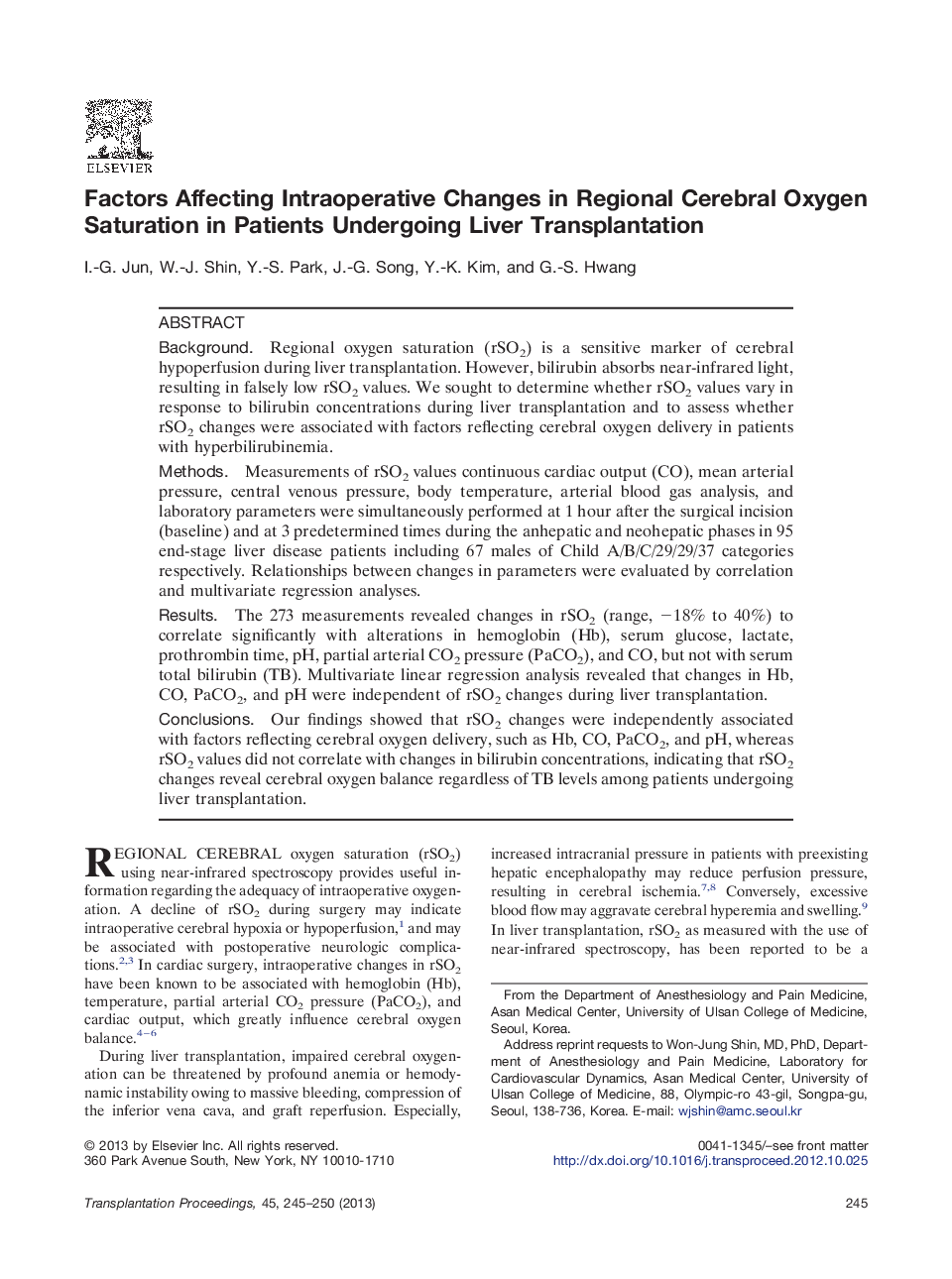| Article ID | Journal | Published Year | Pages | File Type |
|---|---|---|---|---|
| 4257100 | Transplantation Proceedings | 2013 | 6 Pages |
BackgroundRegional oxygen saturation (rSO2) is a sensitive marker of cerebral hypoperfusion during liver transplantation. However, bilirubin absorbs near-infrared light, resulting in falsely low rSO2 values. We sought to determine whether rSO2 values vary in response to bilirubin concentrations during liver transplantation and to assess whether rSO2 changes were associated with factors reflecting cerebral oxygen delivery in patients with hyperbilirubinemia.MethodsMeasurements of rSO2 values continuous cardiac output (CO), mean arterial pressure, central venous pressure, body temperature, arterial blood gas analysis, and laboratory parameters were simultaneously performed at 1 hour after the surgical incision (baseline) and at 3 predetermined times during the anhepatic and neohepatic phases in 95 end-stage liver disease patients including 67 males of Child A/B/C/29/29/37 categories respectively. Relationships between changes in parameters were evaluated by correlation and multivariate regression analyses.ResultsThe 273 measurements revealed changes in rSO2 (range, −18% to 40%) to correlate significantly with alterations in hemoglobin (Hb), serum glucose, lactate, prothrombin time, pH, partial arterial CO2 pressure (PaCO2), and CO, but not with serum total bilirubin (TB). Multivariate linear regression analysis revealed that changes in Hb, CO, PaCO2, and pH were independent of rSO2 changes during liver transplantation.ConclusionsOur findings showed that rSO2 changes were independently associated with factors reflecting cerebral oxygen delivery, such as Hb, CO, PaCO2, and pH, whereas rSO2 values did not correlate with changes in bilirubin concentrations, indicating that rSO2 changes reveal cerebral oxygen balance regardless of TB levels among patients undergoing liver transplantation.
